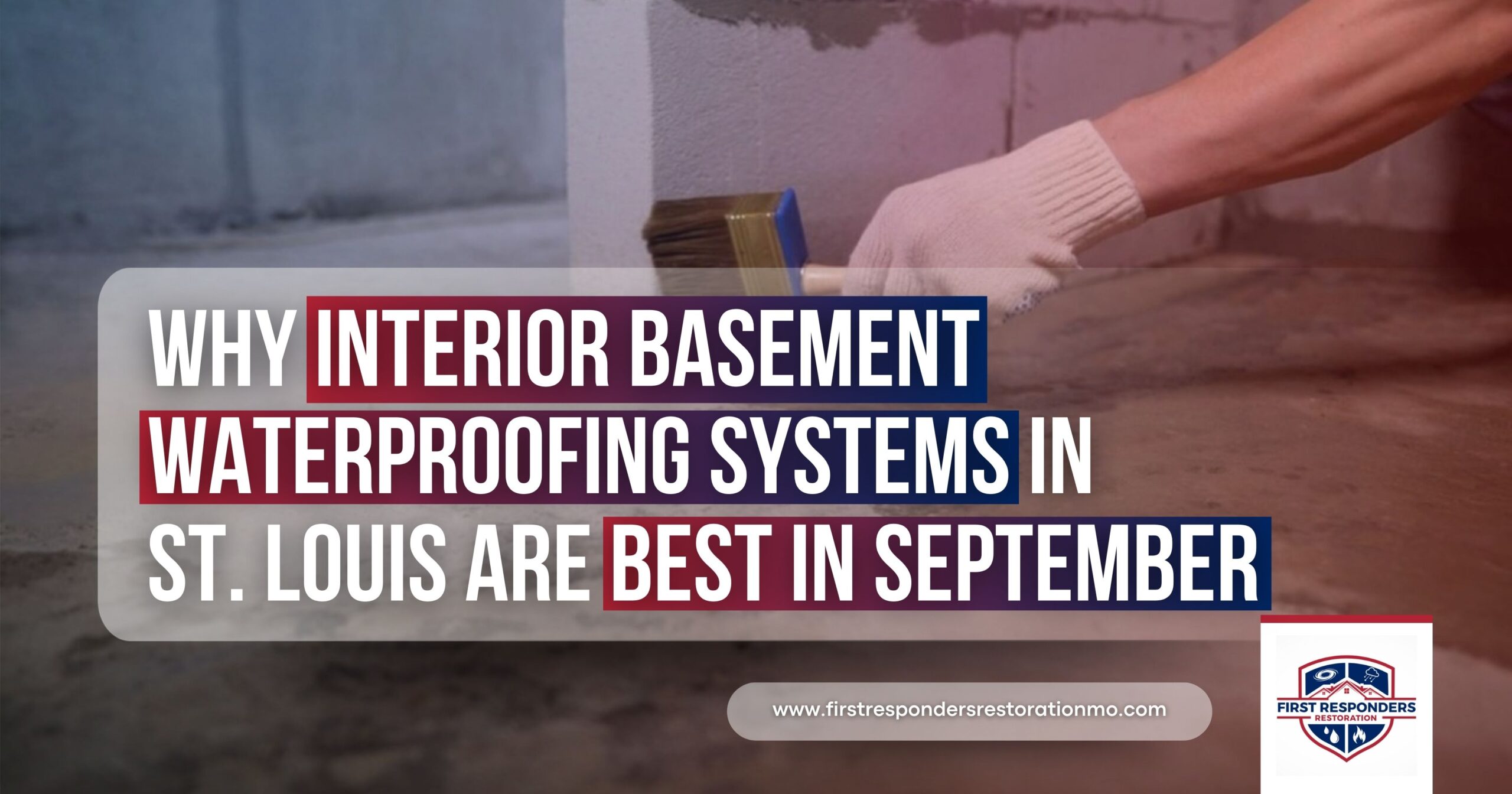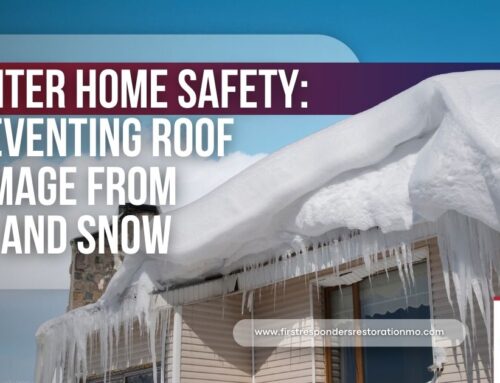Why Interior Basement Waterproofing Systems in St. Louis Are Best in September
When it comes to protecting your St. Louis home, installing an interior basement waterproofing system in September is the smartest move you can make. The leaves are beginning to turn golden, there’s a crisp coolness in the air, and you can finally open your windows without a blast of humid heat. It’s the perfect time of year. But for St. Louis homeowners, this beautiful seasonal shift comes with a silent, looming threat.
Before you know it, the calm of early fall gives way to unpredictable, heavy rains. These storms are followed by the inevitable deep freeze of winter, and then the treacherous spring thaw. Through it all, a single part of your home silently takes the brunt of nature’s relentless power: your basement. It’s the foundation of your home, and it’s constantly under threat from water intrusion.
While many homeowners don’t even think about basement waterproofing until they’ve already found a soggy carpet or a musty, moldy smell, the truth is that proactive measures are the key to long-term protection. And there is no better time to take those proactive measures than in September. This unique window of opportunity, sandwiched between the suffocating heat of summer and the brutal cold of winter, provides the ideal conditions for a successful basement waterproofing project. You can find more information about our full range of services on our website. This is a common solution for basement moisture solutions.
By acting now, you can protect your most valuable asset from flooding, mold, and costly water damage down the line. Don’t wait for the first drop of water to appear; take control of your home’s destiny today.
The Science of Perfect Timing: Why September Is the Ideal Month
When it comes to home improvement projects, timing isn’t just important — it’s everything. This is especially true for basement waterproofing. The effectiveness and longevity of any waterproofing solution, including an interior basement waterproofing system, are completely dependent on environmental conditions. You can’t fight Mother Nature and win, but you can work with her.
Ideal Conditions for a Lasting Seal
Think about it: Temperature, humidity, and soil moisture all play critical roles in how well materials cure and how efficiently systems can be installed. You wouldn’t paint a wall in a rainstorm, and you certainly shouldn’t waterproof your basement under unfavorable conditions.
Early fall in St. Louis, particularly the month of September, provides a perfect balance. The sweltering humidity of August has typically receded, leaving behind drier air that allows sealants to cure properly and quickly. This ensures that the materials form a strong, lasting bond, creating the robust barrier your home needs to withstand years of abuse from the elements. A strong bond from the start means a longer-lasting, more effective seal.
Soil Condition: Less Mess, More Success
The ground, while still holding some moisture from the summer rains, isn’t saturated to the point of being a muddy, foundation-threatening mess. This makes excavation for exterior waterproofing far more manageable and less damaging to your landscaping. A cleaner, more efficient installation process means a faster completion and a more effective long-term solution. You’ll avoid a muddy mess in your yard and get your basement protected with minimal disruption to your daily life.
Why Other Seasons Just Don’t Cut It
The Unbeatable Benefits of September Waterproofing
Taking action in September is more than just about ideal weather—it’s about preparing your home for the specific, unique challenges that lie ahead. By waterproofing your basement now, you are making a strategic investment that pays dividends in protection, peace of mind, and the long-term value of your home. It’s an investment in a professional interior basement waterproofing system.
Defense Against Fall Storms
While August is known for heat and humidity, September and October in the St. Louis area often bring significant, unexpected rainfall. These aren’t just light showers; they can be intense, short-duration storms that dump inches of water in a single afternoon. If your foundation is not properly sealed, this water will find any crack, no matter how small, and begin to seep into your basement. This rapid water intrusion can lead to immediate and devastating effects. In a matter of minutes, a dry basement can become a flooded disaster zone, destroying irreplaceable family photos, cherished heirlooms, and valuable electronics. By waterproofing your home in September, you are creating a robust, proactive barrier that can withstand these heavy rains, preventing a catastrophe before it ever happens. To learn more about how to protect your home from summer storm damage, read our article: “Why End-of-Summer Storms Can Cause Serious Roof Damage.” Basement leaks after heavy rain can be a serious problem, and a professional solution is the best way to prevent them.
Eliminating Mold & Mildew
Lingering summer humidity combined with any existing moisture in your basement creates the perfect breeding ground for mold and mildew. These opportunistic fungi not only produce a musty, unpleasant odor that can permeate your entire home but can also pose serious health risks. Mold and mildew can trigger allergies, asthma attacks, and other respiratory issues, particularly for those with existing sensitivities. Waterproofing your basement in September allows you to address the source of this moisture before it has a chance to turn into a full-blown mold problem. By sealing cracks and installing proper drainage, you eliminate the damp, humid conditions that mold needs to thrive, ensuring your home remains a safe and healthy environment for your family. If you’re concerned about a potential mold problem, you can learn more about our professional mold visual inspection services.
Preparing for the Freeze-Thaw Cycle
The most destructive force for a home’s foundation is often the relentless freeze-thaw cycle of winter and early spring. When water seeps into cracks in your foundation and then freezes, it expands with incredible force, widening those cracks and creating new ones. It’s like a thousand tiny wedges prying your foundation apart, slowly but surely. As the winter snow melts, this expanded network of cracks becomes a superhighway for water to pour into your basement. By waterproofing in September, you are creating a sealed system that prevents water from ever entering those cracks in the first place, thus protecting your foundation from the powerful, crushing effects of freezing and thawing. This preventative measure is far more effective and less expensive than trying to get a full foundation service after the fact.
Navigating Your Options: DIY vs. Professional Solutions
When you notice the first signs of moisture in your basement, your first impulse might be to head to the hardware store for some quick fixes. There are indeed some steps a proactive homeowner can take to mitigate minor water issues. However, it’s crucial to understand the limitations of these DIY solutions and when it’s absolutely necessary to call in the experts.
Simple Fixes for Homeowners
For minor issues, you can take a few simple, cost-effective steps to protect your home. Start by ensuring your gutters are clean and free of debris, which can cause water to overflow and pool around your foundation. You can also make sure your downspouts extend at least six feet away from your foundation. This simple redirection of rainwater is an easy and effective way to prevent a significant amount of water from ever reaching your home’s base. You can read more about how your roofing system plays a role in protecting your foundation. Another important DIY step is to inspect the grading of your soil around the foundation. If the soil slopes toward your house, you can add more dirt to create a slope that directs water away. For very small, hairline cracks, a homeowner can use a hydraulic cement or sealant to fill them. These steps are excellent for routine maintenance and can prevent small problems from escalating into major headaches.
When to Call the Experts
For anything more than a minor issue, professional intervention is not just a suggestion—it’s a necessity. This is especially true for recurring water problems, visible foundation cracks, or signs of significant, persistent water intrusion. Professional waterproofing companies have access to industrial-grade materials and specialized equipment that simply aren’t available to the average homeowner. More importantly, they possess the expertise to accurately diagnose the root cause of the problem, which can be far more complex than a simple crack. A professional team knows what to look for and how to fix a leaky basement for good. We can help with all your Water damage restoration St. Louis needs.
While DIY efforts can provide a temporary band-aid, complex or recurring issues require the advanced solutions and expertise that only a professional can provide. Attempting to fix a major water problem yourself can lead to further damage, more expensive repairs down the line, and a lot of frustration. Our team specializes in installing an effective interior basement waterproofing system.
Why St. Louis Homes are Uniquely at Risk
The unique geography and unpredictable climate of the St. Louis region make an interior basement waterproofing system not just a good idea, but an absolute necessity. A combination of local factors amplifies the risk of water intrusion, making proactive protection even more critical for every homeowner in the area. Basement waterproofing St. Louis homes is a critical service due to these unique conditions.
Unpredictable Rainfall Patterns
While other parts of the country might be enjoying crisp, dry autumns, St. Louis often experiences intense, sometimes tropical, rainfall events in September and October. These storms can be so powerful that they quickly overwhelm poorly maintained drainage systems and find their way into basements, causing significant damage in a short period of time. It’s a serious risk that you can’t afford to ignore.
The Problem with Clay Soil
Much of the soil in the St. Louis metro area is a dense, clay-rich composition. While clay can be great for some things, it’s a nightmare for foundations. Clay soil doesn’t drain water well; instead, it holds onto moisture, becoming saturated and expanding with incredible force. As it dries out, it shrinks. This constant expansion and contraction puts immense pressure on your foundation, leading to hairline cracks and significant structural shifts over time. A professional interior basement waterproofing system is specifically designed to manage this dynamic pressure and protect your home’s integrity against the destructive power of clay soil.
The Constant Threat of Flooding
The combination of heavy rainfall and unstable, clay-rich soil makes basement flooding a persistent and serious risk in the region. Whether it’s a sudden downpour or a slow, steady accumulation of water from a shifting foundation, St. Louis homeowners are more susceptible to water intrusion than those in other parts of the country. A proactive approach to basement waterproofing is a fundamental part of responsible homeownership in this climate. It’s not just about protecting your home; it’s about protecting your entire life’s investment.
FAQ
Conclusion
Your basement is more than just a storage space; it’s a fundamental part of your home’s structure and a valuable asset. Waiting for the first sign of a water problem is a reactive and often costly approach. By taking a proactive stance and waterproofing your basement in September with an interior basement waterproofing system, you are protecting your home from the damaging effects of fall storms, the relentless freeze-thaw cycles of winter, and the subsequent spring thaw.
You are safeguarding your belongings, preventing the growth of harmful mold, and ensuring the long-term integrity of your home’s foundation. Don’t wait until it’s too late. Book your free estimate today and keep your home dry, safe, and protected year-round.








Leave A Comment